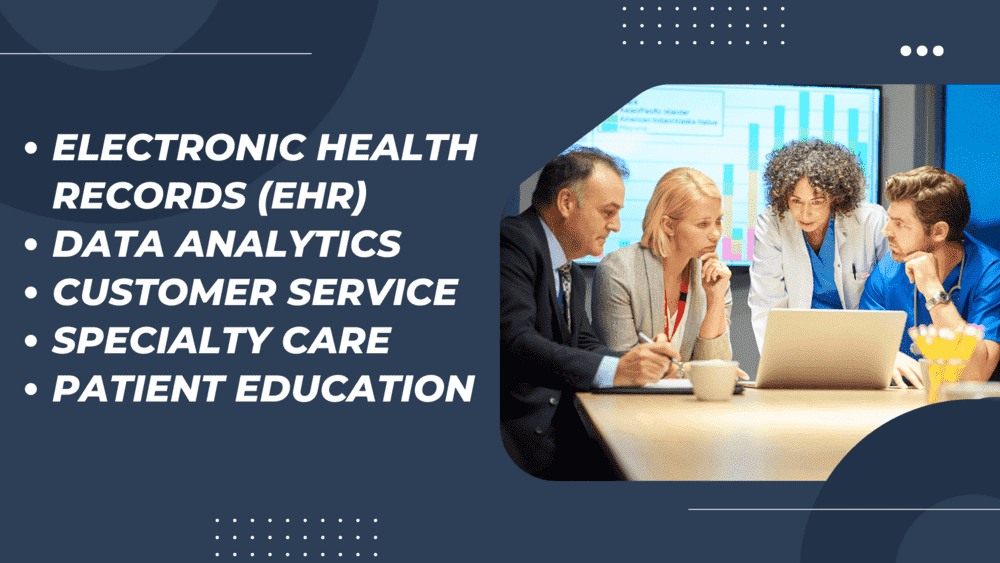What Is Agile In Software Development

What Is Agile In Software Development? Principles, Terms, Phases & Benefits
Delay in custom software development through traditional practices costs the customers in multiple ways like lacking a competitive edge for more time, losing sales opportunities forever, giving their competitors more time to go ahead, the emergence of new requirements, etc. Agile software development and testing processes address such issues effectively and make the developed software usable up to its full strength in a minimum period. As most businesses want to use new software at the earliest with no extra need for alterations post-integration, increasing numbers of prominent bespoke software development companies have embraced agile software development methodology.
What Is Agile In Software Development?
Agile software development is an incremental and iterative approach for bespoke software development focused on the importance of faster and frequent software product delivery. Agile software methodology evolves around multiple time-boxed development cycles known as ‘sprints’. Agile software development services are driven by values, collaboration, flexibility, and customer satisfaction. Based on the Agile principles, it prioritizes customer collaboration, individuals, interactions, working software, and responding to required changes.
The Evolvement of Agile: What are the Twelve Agile Principles?
.jpg) Because of its flexibility and evolutionary nature, agile is one of the popular approaches practiced by top bespoke business software solutions development companies. In 2001, 17 technologists drafted Agile Manifesto for quick Software and mobile app development. At an early stage, the agile approach was practiced only by software development companies but after experiencing its benefits, other businesses also started to practice this approach for cost-effective successful project management. Agile Manifesto defines twelve principles that help tailored-to-need agile software development services company to deliver at par with customer satisfaction –
Because of its flexibility and evolutionary nature, agile is one of the popular approaches practiced by top bespoke business software solutions development companies. In 2001, 17 technologists drafted Agile Manifesto for quick Software and mobile app development. At an early stage, the agile approach was practiced only by software development companies but after experiencing its benefits, other businesses also started to practice this approach for cost-effective successful project management. Agile Manifesto defines twelve principles that help tailored-to-need agile software development services company to deliver at par with customer satisfaction –
- To satisfy the customer through continuous and prompt delivery of valuable software is the highest priority.
- Accommodating changing requirements even at a later stage of development fosters the customer’s competitive advantage.
- Frequent delivery of working software on a shorter timescale strengthens customer confidence.
- Flawless communication between the stakeholders breaks the silos in on time software development.
- Reduced micromanagement and empowered motivated team complete the projects faster at a better quality.
- Face-to-face conversation is the most effective information sharing method within a software development team.
- The usability of developed software is the only measure of development progress.
- Developers and users should maintain a sustainable development pace from the start until the successful delivery.
- User-friendly good design and technical excellence help developers to create a stable product.
- Simplicity should be the core focus area throughout the software development cycle to eliminate waste of efforts.
- Self-organizing teams with the freedom to do the best deliver the best values for the organization and customer.
- Evaluating the performance and identifying the scope for improvement at regular intervals boost the collective performance.
Twelve Agile Terminology You Should Know
Before initiating software development with agile approach, you should be familiar will all the key agile terminology to plan concisely, managed and goal-oriented. To help your software developers embrace agile methodology at ease, here I summarize the 12 most used agile terms-
- Acceptance Test Driven Development (ATDD): Team members collaborate and write acceptance tests with different perspectives (development, testing, customer) before implementing the particular functionality.
- Backlog: It represents an ever-changing list of the software development requirements. It is a list of prioritized features, shared by stakeholders, to be incorporated in the product development.
- Burndown chart: A burndown chart is created to measure the software development progress over a period. The vertical axis represents backlog and the horizontal axis represents the period.
- Burnup Charts: A burnup chart in agile methodology shows the work completed. The vertical axis shows the work done; the horizontal axis shows the period.
- Business Agility: It is the organization’s ability to judge internal and external changes and respond quickly to required changes ensuring the best value delivery to customers.
- Collective ownership: It is the explicit convention allowing every team member to make required changes to any code file either to repair a defect, complete a task, or to improve the overall structure of the code.
- Customer Development: This framework provides a scientific roadmap to validate assumptions about the product to be developed and business.
- Scrum Master: It is the person responsible for managing the development process and solving the problems while enforcing the shift from traditional practices to embracing agile approach.
- Scrum: It is process of daily stand-up meeting focused on reviewing each team member's progress, addressing individual’s concerns, eliminating process silos, tracking accountability, and scaling performance.
- Sprint: It is a short software development phase spanned across 1 week to a month depending on the particular task. Sprint methodology prevents projects from being overwhelming and allows getting feedback at appropriate stages.
- Timeboxing: Timeboxing is an agile process to assign a specific time frame to complete a particular part of software development. The particular development process stops at the end of the timebox. It is a great tool to improve productivity.
- User Story: It is an informal general explanation of software features that are listed from user’s perspective. The purpose of user story is to judge how a particular software feature will deliver value to the end user.
Six Phases of Agile software development
- Requirements gathering: Defining the requirements; explaining business opportunities; planning the time schedules; defining required resources; assessing technical and economic feasibility
- Requirements designing: Defining requirements based on user flow diagram or high-level UML diagram; assessing suitability to the existing system
- Construction/ iteration: Working with UX designers to manage all the product requirements accommodating customer feedback; turning the created design into code with the flexibility to add additional features and tweaks in later iterations
- Testing/ Release /Quality assurance: Testing software to ensure functionality; fixing the identified issues; conducting user training; completing documentation; release of final iteration for production
- Maintenance: Deployment; providing the required support for smooth operation; refreshing the existing product if new iterations are required based on customer feedback
- Retirement: Notifying users in case of technology update or incompatibility with the advanced system; migration to advanced technology
What Is Agile In Software Development? Principles, Terms, Phases & Benefits
Twelve Benefits of Agile Software Development Methodology
Agile methodology is a great productivity tool for bespoke agile software development company looking to transform the existing development processes for better quality delivery at higher profitability. It helps developers to manage different processes more efficiently to develop the required software product within a budget while ensuring the ultimate customer experience. The top 12 key benefits of adopting the Agile approach for software development are-
- Increased visibility to make informed decisions
- Increased adaptability to combat disruption and produce more value for customers
- Increased alignment to reduce waste (time), improve quality, and speed up delivery
- Increased product quality through frequent modular delivery of software
- Increased business value by accommodating changing needs of customers through iterative development
- Higher customer satisfaction through regular interactions to address their concerns
- Decreased risk of poor performance through internal and external alignment
- Success in predictable delivery using time-boxed development cycles and sprints
- Improved project control with minimum repetitive tasks because of seamless personalized communication
- Improved performance, productivity, and profitability in addition to strengthened customer relationship
- Improved brand image because of fostered trust and frequent communication with customers
- Strengthened team collaboration keeps the team members stay stress-free; therefore, agile organizations succeed to get higher retention rate
Wrapping up With Pro-Tips
Agile software developers focus on managing sustainable development not on following traditional practices. A significant shift in the planning of modern Agile software development services is identifying business values prior to writing a user story rather than writing a user story first and then evaluating the business values. The top Agile business solutions development companies prefer to use cloud-based solutions for faster coding, accurate envisioning (prediction), hybrid testing, and seamless deployment; as of today, Cloud technology has become an Agile accelerator.
FAQs
Q. What is Agile software development?
Q. How does Agile differ from traditional software development methods?
Q. What are the key principles of Agile?
Q. What are some common Agile methodologies?
Q. Who benefits from using Agile?
Related Blogs

Bespoke CRM Solution for Healthcare Services Providers
The number of healthcare businesses in The UK, including …

The Benefits of Using a CRM in Recruitment
Are you a recruitment agency and working without a CRM? And …

Revolutionising Your Marketing Automation Strategy
What is Marketing Automation? Marketing automation …


